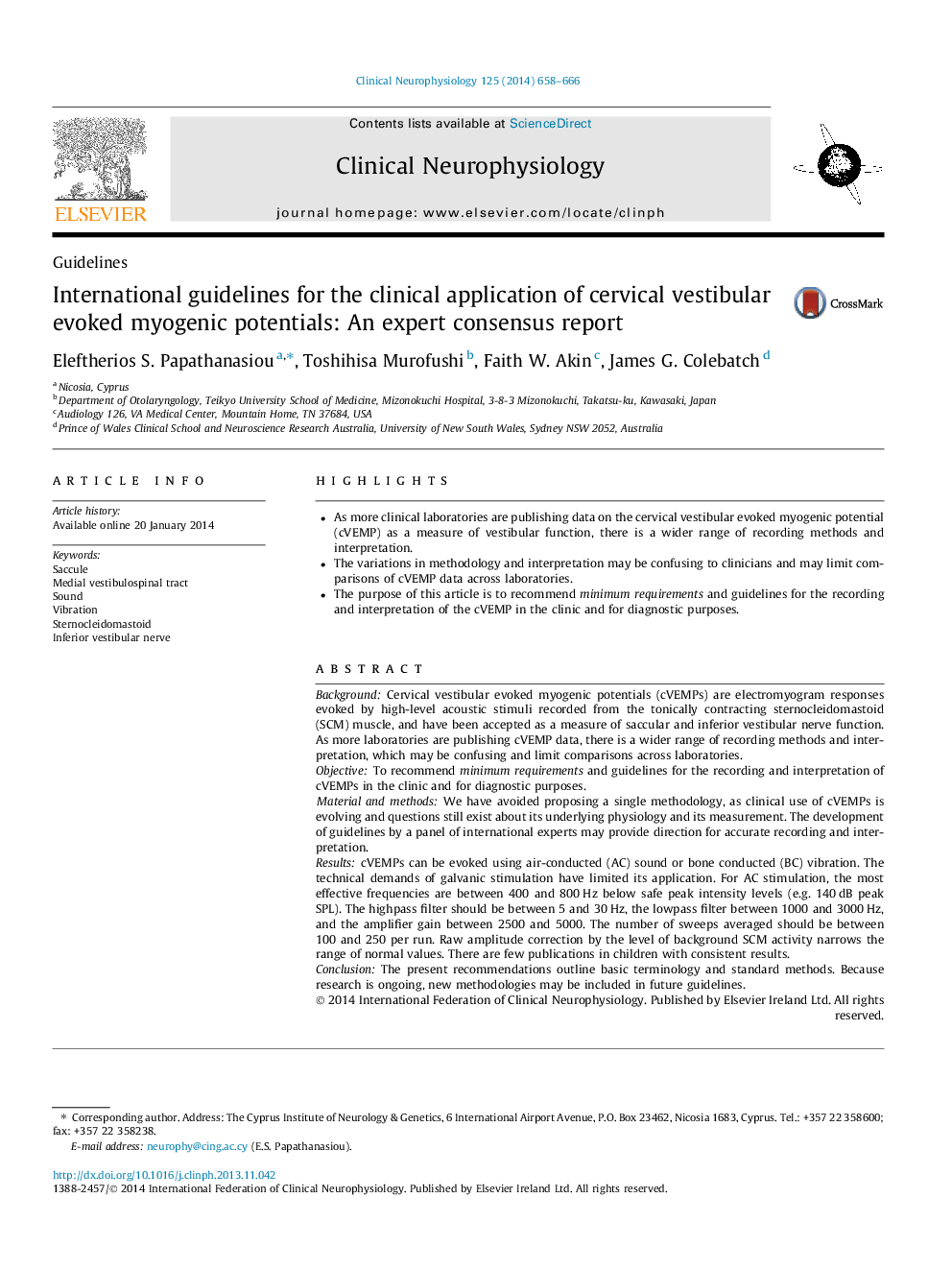| کد مقاله | کد نشریه | سال انتشار | مقاله انگلیسی | نسخه تمام متن |
|---|---|---|---|---|
| 6008386 | 1184964 | 2014 | 9 صفحه PDF | دانلود رایگان |
- As more clinical laboratories are publishing data on the cervical vestibular evoked myogenic potential (cVEMP) as a measure of vestibular function, there is a wider range of recording methods and interpretation.
- The variations in methodology and interpretation may be confusing to clinicians and may limit comparisons of cVEMP data across laboratories.
- The purpose of this article is to recommend minimum requirements and guidelines for the recording and interpretation of the cVEMP in the clinic and for diagnostic purposes.
BackgroundCervical vestibular evoked myogenic potentials (cVEMPs) are electromyogram responses evoked by high-level acoustic stimuli recorded from the tonically contracting sternocleidomastoid (SCM) muscle, and have been accepted as a measure of saccular and inferior vestibular nerve function. As more laboratories are publishing cVEMP data, there is a wider range of recording methods and interpretation, which may be confusing and limit comparisons across laboratories.ObjectiveTo recommend minimum requirements and guidelines for the recording and interpretation of cVEMPs in the clinic and for diagnostic purposes.Material and methodsWe have avoided proposing a single methodology, as clinical use of cVEMPs is evolving and questions still exist about its underlying physiology and its measurement. The development of guidelines by a panel of international experts may provide direction for accurate recording and interpretation.ResultscVEMPs can be evoked using air-conducted (AC) sound or bone conducted (BC) vibration. The technical demands of galvanic stimulation have limited its application. For AC stimulation, the most effective frequencies are between 400 and 800Â Hz below safe peak intensity levels (e.g. 140Â dB peak SPL). The highpass filter should be between 5 and 30Â Hz, the lowpass filter between 1000 and 3000Â Hz, and the amplifier gain between 2500 and 5000. The number of sweeps averaged should be between 100 and 250 per run. Raw amplitude correction by the level of background SCM activity narrows the range of normal values. There are few publications in children with consistent results.ConclusionThe present recommendations outline basic terminology and standard methods. Because research is ongoing, new methodologies may be included in future guidelines.
Journal: Clinical Neurophysiology - Volume 125, Issue 4, April 2014, Pages 658-666
